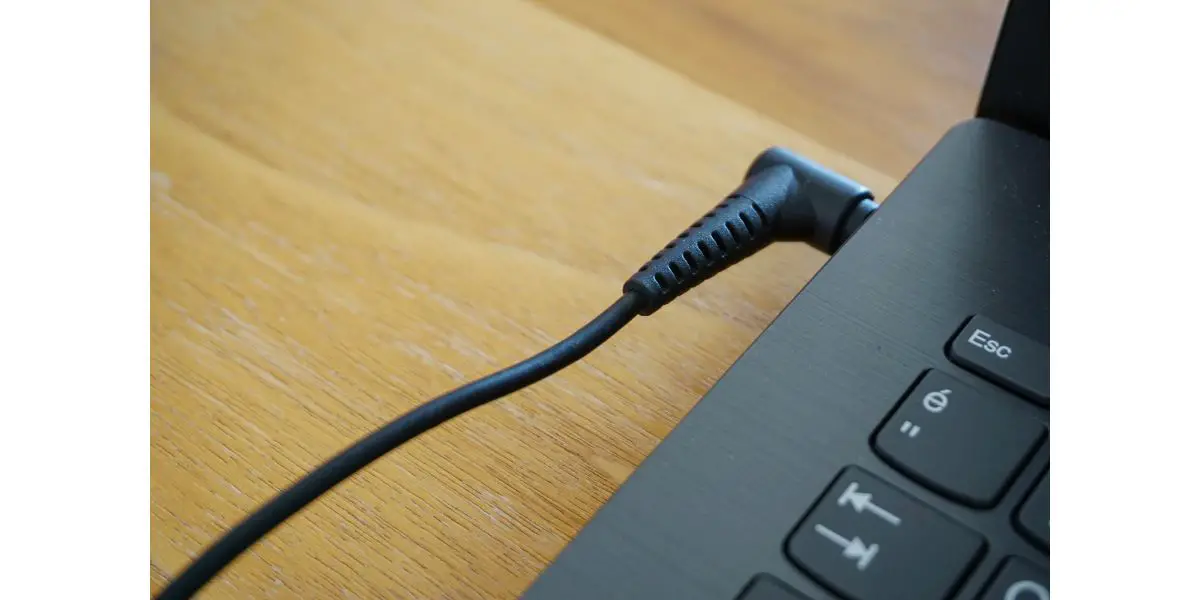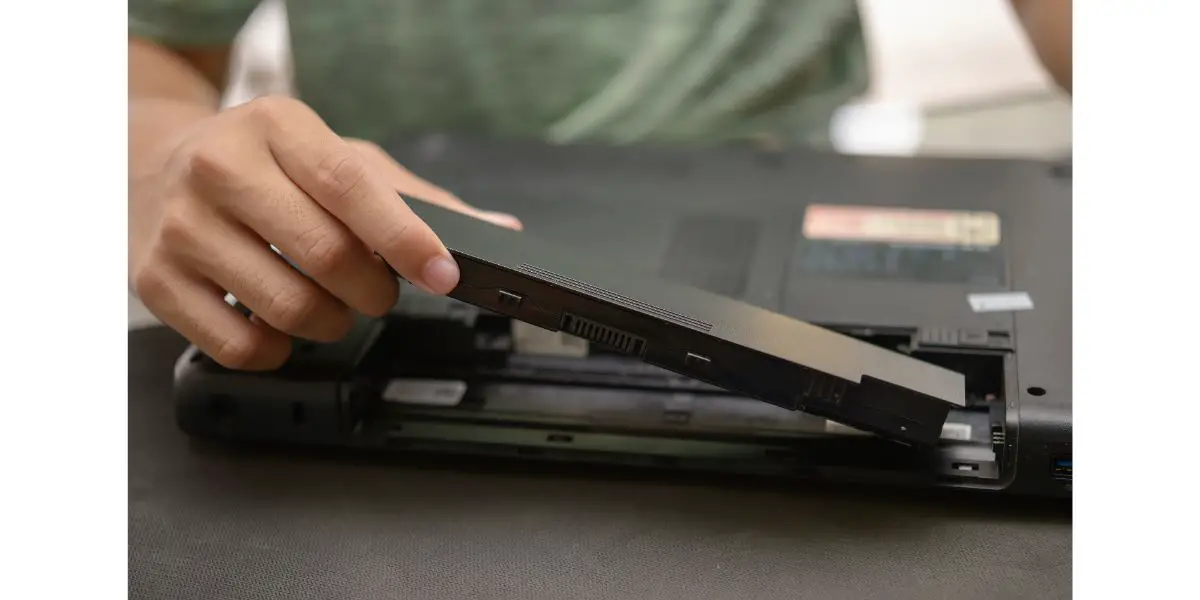Disclaimer: This post may contain affiliate links, meaning we get a small commission if you make a purchase through our links, at no cost to you. For more information, please visit our Disclaimer Page.
Laptops are the perfect type of computer because of their flexibility, portability, and ease of use. However, there are instances when laptops struggle to charge and only work when they’re plugged in, defeating the purpose of using a laptop. Fortunately, there are a few things that you can do to fix this issue, even without professional help.
Table of Contents
1. Check the Cord, Power Adapter and External Peripherals
Before you try and fix anything with your laptop, it’s best to start with the easiest solution — check the power cord and adapter to see if they can charge the battery. Although most power cords and adapters can provide enough power for the laptop, they may not have the capacity to charge the battery. Therefore, there are some important things to keep in mind:
- If you’re using the power cord and adapter that comes with the laptop, then you should check the external peripherals connected to your computer. These external devices also require power, and some of them will pull from your laptop. So if you’re using too many peripherals, it would seem like your laptop only works when plugged in.
- If you’re using a 3rd-party charger, check its voltage output and compare it with the laptop that you’re using. It’s important to note that a “universal charger” isn’t actually universal, and some may not even have enough output to charge your laptop.
- When using a power adapter, it’s important to use one with the same output as the requirement for your laptop. An adapter with a lower power output can still power your computer, but its output may not be enough to charge the battery.
- Using a power cord and adapter that doesn’t match your laptop’s requirements is very dangerous. Not only will it prevent you from charging the battery or powering the external peripherals connected to your laptop, but it may even cause damage to your battery’s health.
Additionally, you can search online for more information about your laptop’s voltage requirement. Simply look at the underside of the laptop, and it will provide you with the brand and model you can use to search for its voltage requirement.
2. Disable Apps That Are Using Too Much Power
Aside from external peripherals that use too much power, some applications run in the background and still require a lot of resources. If you have too many applications in the background, it will prevent your battery from charging and may even slow down your laptop’s overall performance.
When you install an application on your laptop, some will run in the background by default. Most of these are messaging services, browsers, and other tools that you may or may not even need for your work.
An average user will have dozens of applications running in the background without opening them, which will affect the resources your laptop needs to run smoothly. Remember, laptops will keep adjusting their performance depending on the apps you’re using, so it would be best to keep them closed by default.
Here’s how you can disable apps from running on startup or start a background task:
- Go to your Windows Search Box.
- Search for “Startup Apps.”
- Go through the list of apps that run on startup and disable the ones that you don’t need.
Once you’re done with this setting, you’ll want to disable “Fast Startup” to ensure that every application running in the background will close when you restart your computer. It will add several seconds to your overall startup time, but it ensures that your laptop doesn’t have unnecessary apps running in the background.
Here’s how you can disable Fast Startup on your laptop:
- Go to your Windows Search Box.
- Search for Power & Sleep Settings.
- Look for the Additional Power Settings.
- On the left panel, click Choose what the power buttons do.
- Look for the Shutdown Settings.
- Make sure the Turn on fast startup is disabled.
- Shut down your computer, then turn it back on.
If an application running in the background prevents your laptop from charging, doing these steps will fix the issue. Aside from that, this setting will also help your laptop run a little faster compared to several applications taking up resources, which can affect your laptop’s performance.
3. Fix the ACPI-Compliant Control Method Battery Driver
The ACPI-Compliant Control Method Battery driver is the one responsible for managing how your laptop charges its battery. If this driver is corrupted or isn’t working correctly, your laptop won’t be able to redirect the power to the battery, and it will seem like it only works when plugged in.
You’ll have to update the driver or reinstall it to fix this issue. Some would prefer to disable and reenable the ACPI-Compliant Control Method Battery driver. However, if you suspect this is your laptop’s issue, it would be best to uninstall it and let Windows reinstall it for you.
By doing this, you’re installing a fresh driver rather than simply updating the one you currently have, ensuring that your laptop has the right driver to charge the battery correctly.
Here’s how you can uninstall and reinstall the ACPI-Compliant Control Method Battery Driver:
- Press Windows Key + R at the same time. It will open the “Run” window allowing you to run various commands in Windows.
- Type in devmgmt.msc, then press Enter. It will open the Device Manager, where you can see all the drivers installed on your laptop.
- Click Batteries. This will open all the drivers related to managing your laptop’s battery.
- Right-click on the ACPI-Compliant Control Method Battery. It will provide you with different options to manage the driver, including updating, disabling/enabling, and uninstalling.
- Click on “Uninstall Device.” We prefer uninstalling the driver because it takes out a few extra steps in case updating or disabling/reenabling doesn’t fix the issue.
- Restart your laptop. During boot-up, Windows will automatically reinstall the driver.
If the ACPI-Compliant Control Method Battery driver is the reason your laptop only works when plugged in, it’ll start charging the battery as soon as you restart your computer.
While working on your laptop’s drivers, consider updating the other drivers on your computer as well. Doing this ensures that your laptop is working properly and helps you improve its performance and battery life.
4. Reset the Profile Power Schemes
Laptops have different power plans that allow you to determine how the computer will work and the performance that it will provide. The profile power scheme is where you choose whether your laptop will give you:
- High performance
- Balanced performance
- Power saver
- Eco-mode
Although this is a relatively simple option for most users, changing these settings can cause issues with how your laptop manages power distribution. Sometimes, it may even prevent your computer from charging the battery.
Resetting the profile power scheme to its default setting will remove any performance configurations you created for your laptop. Aside from this, it’ll also remove the error that might be preventing your computer from charging the battery.
Here’s how you can reset the profile power schemes:
- Go to your Windows Search Box and type in cmd. It will open the command prompt where you can input the command for resetting the power scheme.
- In the command prompt window, type in powercfg -restoredefaultschemes. When you press enter, it won’t provide you with any information regarding the command you entered; this is okay because you’re power schemes are now back to default.
- Restart your laptop and wait for it to reboot. Look at the battery status on the lower-right side of your monitor and see if the battery starts to charge.
5. Give Your Battery a Hard Reset
Batteries may look simple enough that many people aren’t even paying attention to them. However, there are complex mechanisms that make laptop batteries work. They even have buttons or commands dedicated to giving them a hard reset.
Aside from the drivers that manage the power delivery for your laptop, batteries may also experience errors that prevent them from charging. If you notice that your computer only works when plugged in, giving the battery a hard reset might help you fix the problem.
Different laptops have different ways to reset the battery, so you’ll have to determine how to do it on your computer. You’ll either have to find the reset button for the battery or hold down the power button on your laptop.
How To Find the Battery Reset Button
Laptops with removable batteries are a bit complicated because you’ll have to find the battery reset button. Some of these buttons are labeled, while others look like small pinholes similar to the ones you’ll see on smartphones or the reset button on routers.
The location of the battery reset button will depend on the model. Generally, you’ll be able to find them on the underside near the battery or either side of the laptop, together with the ports and other buttons.
Unlike the power button, the battery reset button will be inaccessible without a tool. You can use a straightened paper clip or a sim ejector tool to reach the button and press it. Once you’re done with it, be sure to reset the laptop and see whether it starts to charge the battery.
How To Reset the Battery Using the Power Button
Laptops with built-in batteries are easier to reset. In fact, you don’t even have to find the reset button for it. Simply press the power button and hold it down for at least 30 seconds to give your battery a hard reset.
Once the reset is complete, you’ll see some lights turn on around the laptop, notifying you that the reset is done. All you have to do is to reset the computer and plug the power cord back in to start charging the battery.
6. Check Your Battery Connectors and Position
Your laptop should be connected directly to the battery to start charging. If small objects like lint block the connectors, your computer won’t even detect the battery and will only work if it’s plugged in.
This issue is common for laptops with a removable battery, but it’s also very easy to fix. All you have to do is remove the laptop’s battery and clean the connector pins. Even the smallest object blocking a connector pin will cause your computer to malfunction, so make sure there’s clean, direct contact from the laptop to the battery.
7. Deal With an Overheating Battery
Laptop batteries are prone to overheat, especially when you’re using the laptop continuously and it’s plugged into the power outlet all the time. If you suddenly notice that your computer has stopped charging the battery, it would be best to remove it from the laptop for a while before putting it back in.
Every peripheral connected to your laptop is prone to overheating, especially if you consider that almost every laptop won’t have as much airflow as desktop computers. It’s a trade-off that you get for the flexibility and portability, but it’s also easy to address as long as you’re keeping an eye on its temperature.
8. Replace Your Laptop’s Battery
Unfortunately, there are times when replacing the battery is the only fix that you can do for a laptop that only works when plugged in. Laptop batteries have a limited power cycle, and their health degrades over time.
If you’ve tried all the fixes we shared above, and your laptop still can’t charge the battery, your next best option is to replace it. It’ll be easy if you’re using a removable battery, but you need to make sure that you’re replacing it with one that’s compatible with your laptop.
If your laptop has a built-in battery, it’s still possible for you to replace the battery if you’re comfortable with opening the back cover. However, we can’t recommend this fix for everyone because it exposes the other components of the laptop, which carries a lot of risk for even more significant issues.
Conclusion
When a laptop is only working when plugged in, the first thing you must look at is the battery. You can do many fixes to address this issue, and you can do most of them even without professional help.



